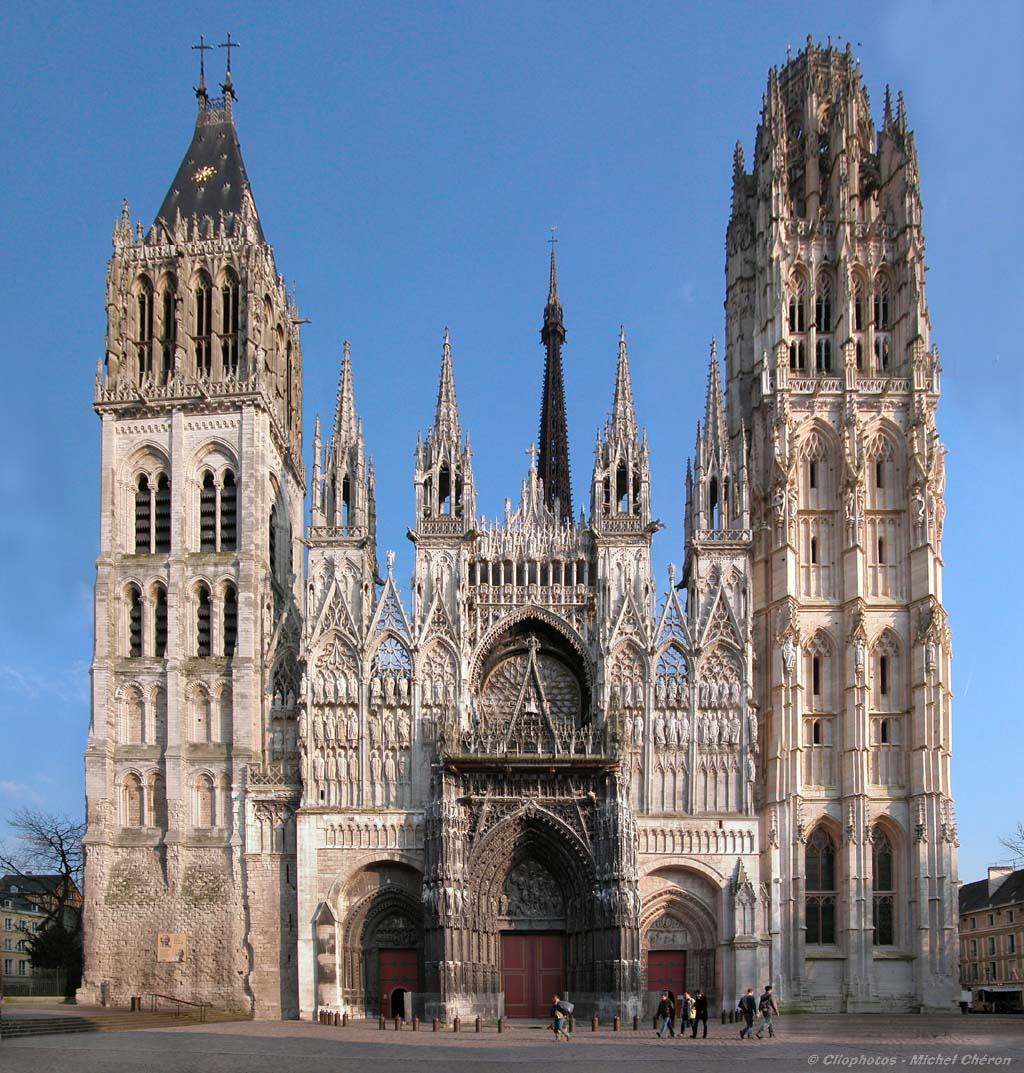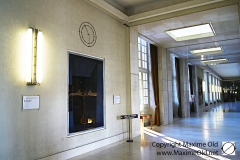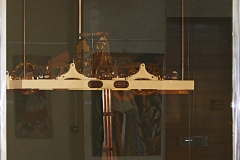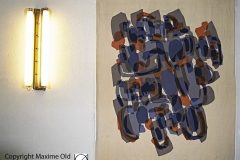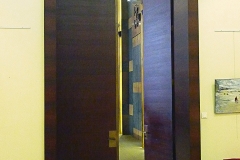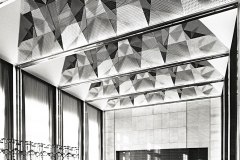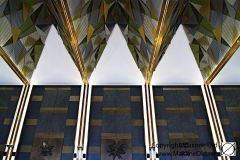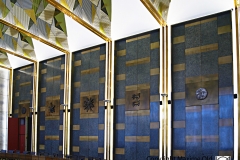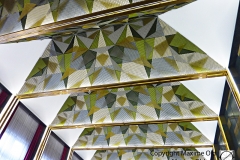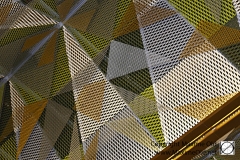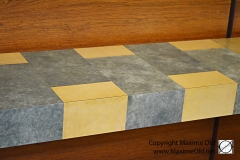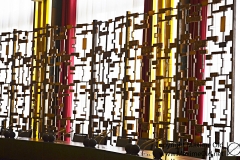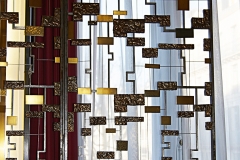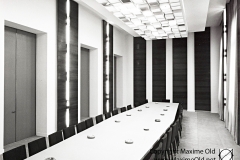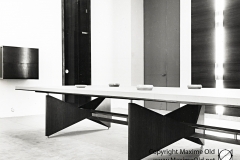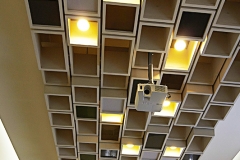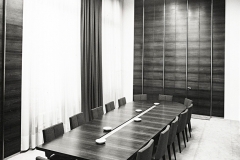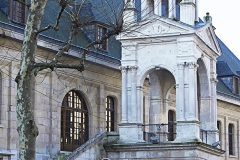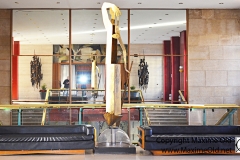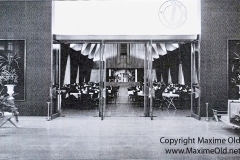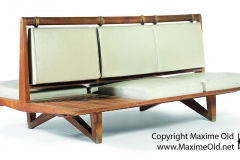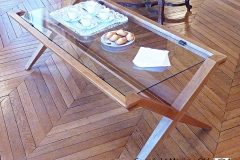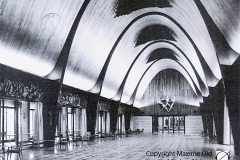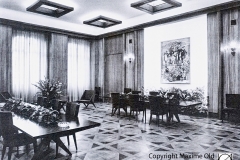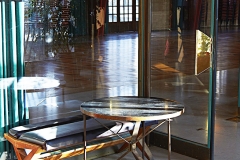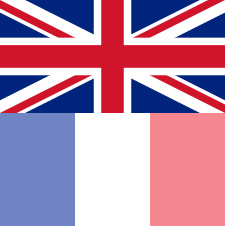 Two famous Maxime Old visible interiors are situated in Rouen one of the very first towns in France in respect of the quality of its historical and artistic patrimony.
Two famous Maxime Old visible interiors are situated in Rouen one of the very first towns in France in respect of the quality of its historical and artistic patrimony.
Its Town Hall, classified as historical monument, is settled in the monksâ former dormitory of the quite powerful Saint-Ouen Abbey.
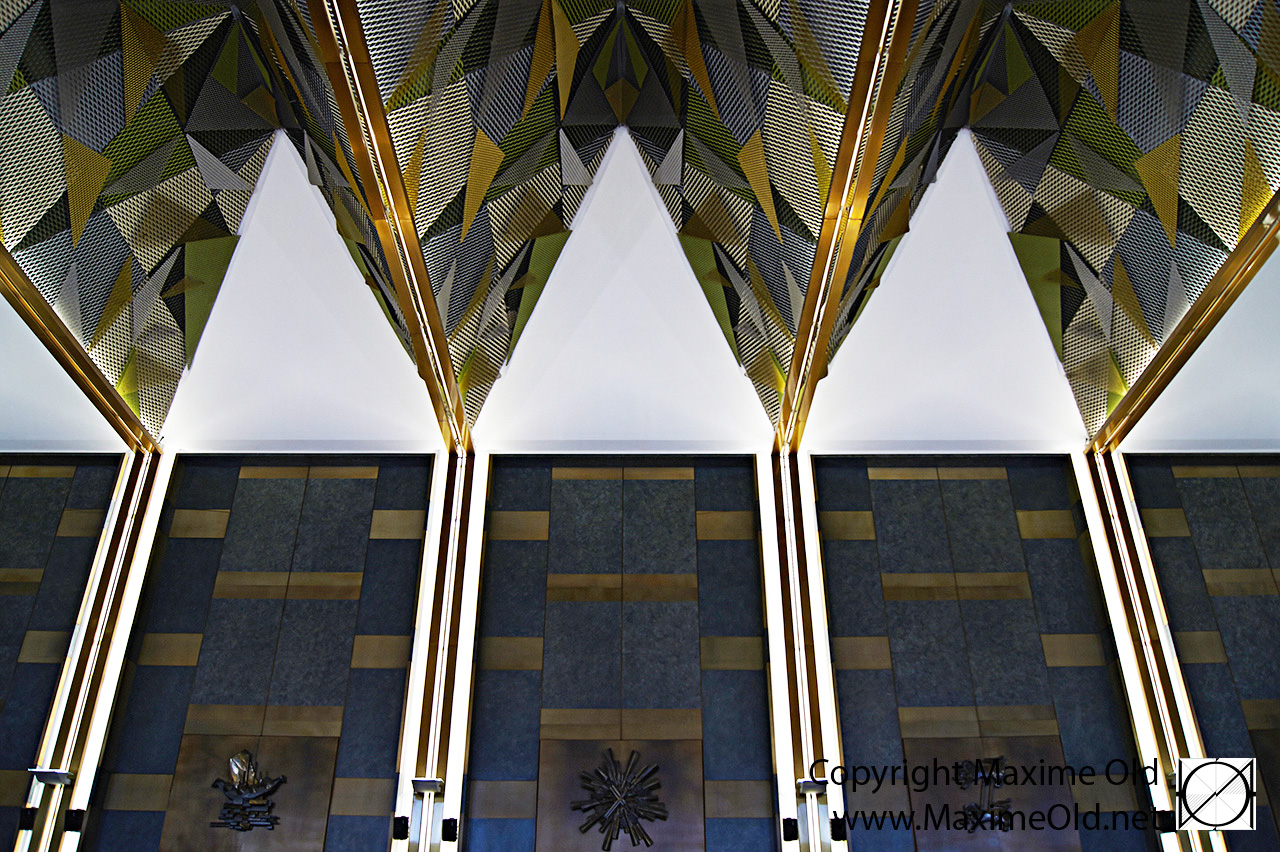 In 1960 the municipality is looking for a better setting for its Council: the Council Hall, its annexes the Commission rooms and its gallery. The Doctor Robert Rambert, deputy-mayor in charge of Culture and Patrimony, recommends Maxime Old for the design of the project that must be presented to the Council for approval.
In 1960 the municipality is looking for a better setting for its Council: the Council Hall, its annexes the Commission rooms and its gallery. The Doctor Robert Rambert, deputy-mayor in charge of Culture and Patrimony, recommends Maxime Old for the design of the project that must be presented to the Council for approval.
Why Maxime Old, interior decorator from Paris, not from Rouen?
In 1947 in the context of the reconstruction Maxime Old starts designing a model of living-room shown on the front page of the Mobilier and Décoration magazine. In 1954 at the Arts Ménagers exhibition the office furniture he presents is bought by Docteur Rambert for his own office. Pleased he will next put into the hands of Maxime Old the interior decoration of his house in Rouen and of his seaside residence in Etretat.
On October 3rd 1960 the Council is convinced by Maxime Oldâs project and gives him the management of its realization. Following his usual rule of conduct he will call on other artists as Raoul Ubac for the gallery tapestries and Jean-Pierre Demarchi for the medallions illustrating the history of Rouen in the Council Hall.
On October 19th 1964 the Mayor, Bernard Tissot, inaugurates the newly decorated premises. Jean Lecanuet will be in the chair during 25 years, then his successors.
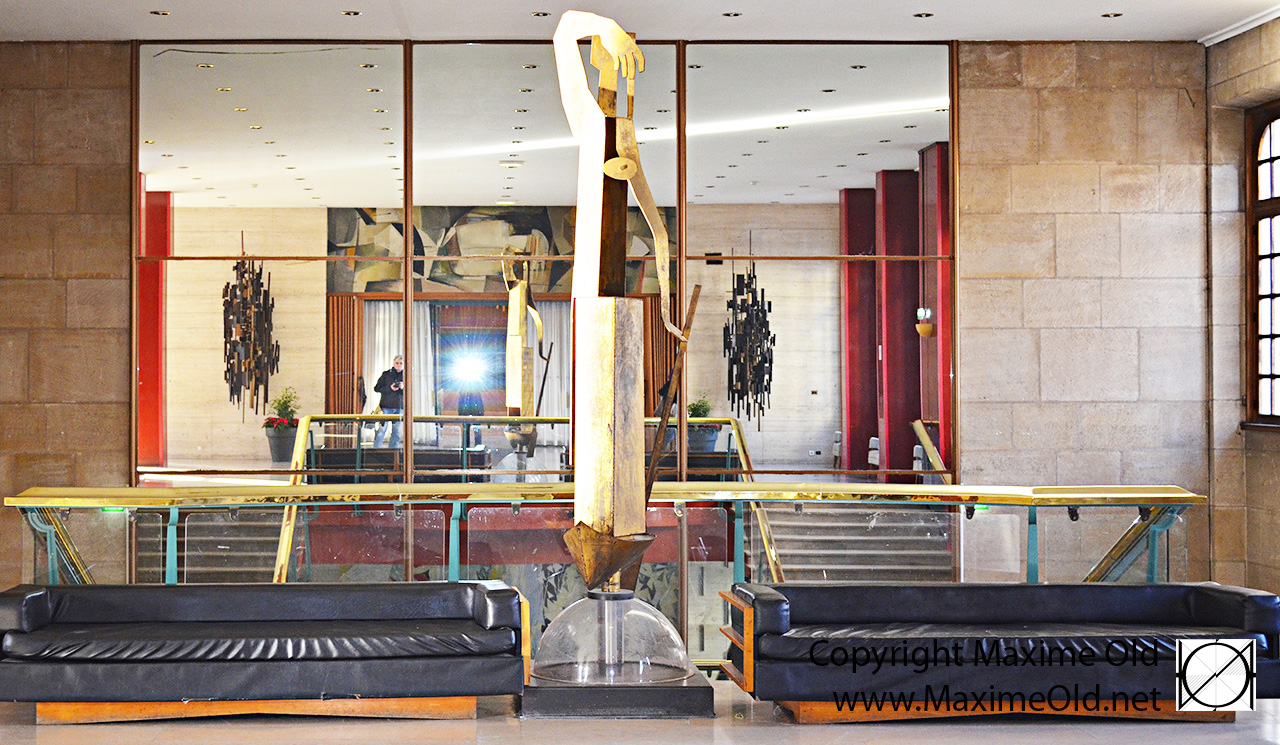
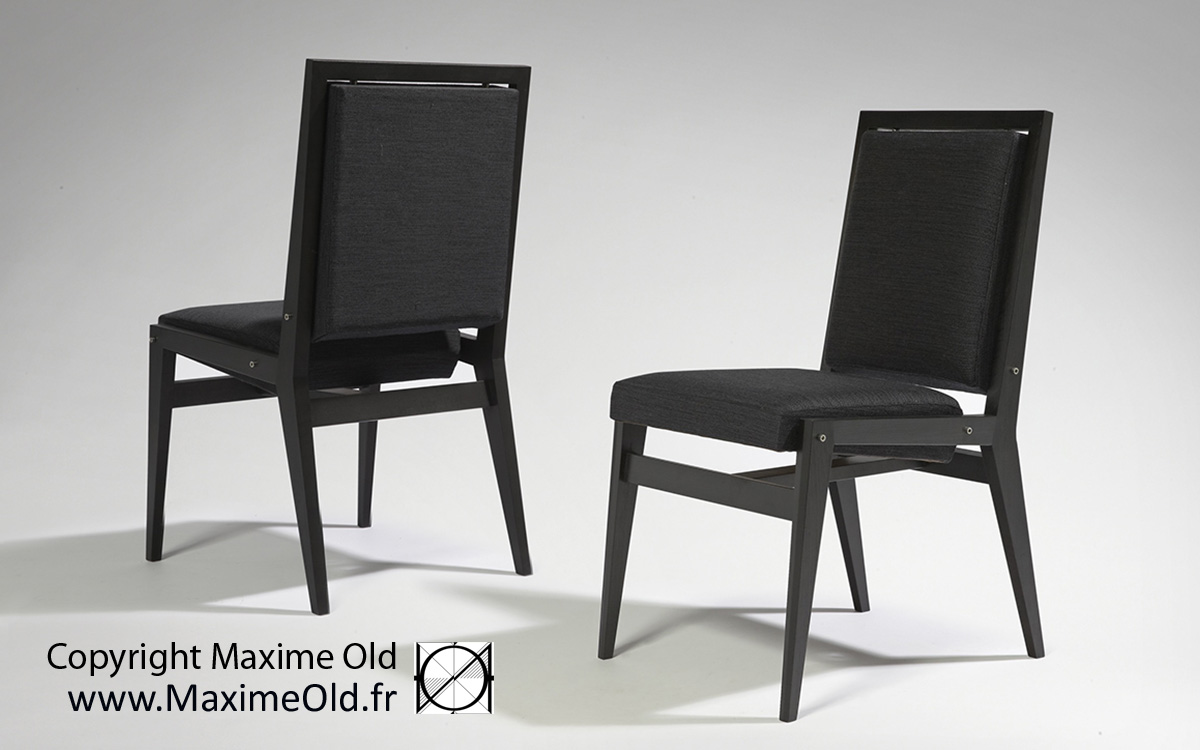 Amazingly fifty years later the municipality is daily still using this setting designed and realized by Maxime Old from floor to ceiling. The spaces fitted and the quality materials implemented, as remarkable as the style, hold on together. This is the “Council Chair” still in use, its present releases are here.
Amazingly fifty years later the municipality is daily still using this setting designed and realized by Maxime Old from floor to ceiling. The spaces fitted and the quality materials implemented, as remarkable as the style, hold on together. This is the “Council Chair” still in use, its present releases are here.
The municipality, actually chaired by its Mayor, Mr Yvon Robert considers that this modern work is part of its patrimony classified as historical monument. It preserves it carefully and restores it when needed. Outstanding artistic witnesses of their time these premises are open to the public. No doubt they are thus the most representative Maxime Old visible interiors nowadays.
The Halle aux Toiles (Cloth market) endured a lot during the Second World War. Its reconstruction is put into the hands of the architects Raumond Bardé (DPLG/Rouen) and Henri Jullien (ABF/Paris). Its decoration is the second project that the municipality entrusts Maxime Old with.
On the second floor, under its vault recalling Norman drakkars as well as the cloth of the drapers who made the wealth of Rouen, is now located the Congress Centre. That floor is as well a good illustration of the style created by Maxime Old, enriched by sculptures made by Jean-Pierre Demarchi, Robert Couturier and René Collamarini. The ceramic decorative panels are from Robert Savary. The main staircase is from Raymond Subes.
Enjoy your visit in Rouen, and the Maxime Old visible interiors viewing. Noteworthy elements:
In the Gallery âAntichambre de Monsieur le Maireâ (Mayorâs anteroom)
The clock mechanism of the former Campanile is shown in the favourable setting of the modern reception area. Work of Jean Wagner from Paris, known as Neveu, 1854.
At the ends two Aubusson tapestries signed Raoul Ubac, made by Suzanne Goubely Workshop.
The Council Hall entrance gallery
In the Council Hall and the Commission rooms
The ceiling made by the Borderel Firm, managed by Raumond Subes, according to Maxime Oldâs project.
The decorative panels and the marquetery console made with a stratified material invented and realized by Maxime Old.
The all-metal screen, âcoreâ of the stand on which the Mayor and his deputies sit.
Jean-Pierre Demarchiâs medallions.
The blunt diamond-shaped table with its cut away diamond-shaped legs.
The lighting wood panels.
In the Halle aux Toiles
The wainscoted vault
The Maxime Old furniture
The sculptures by Jean-Pierre Demachi and Robert Couturier on the top of Raumond Subesâ staircase.

